What is a composite door? 4 front door specialists explain what they are made of and why they might be the ideal choice for your home
Find out what this type of door is made from and how it could enhance your home
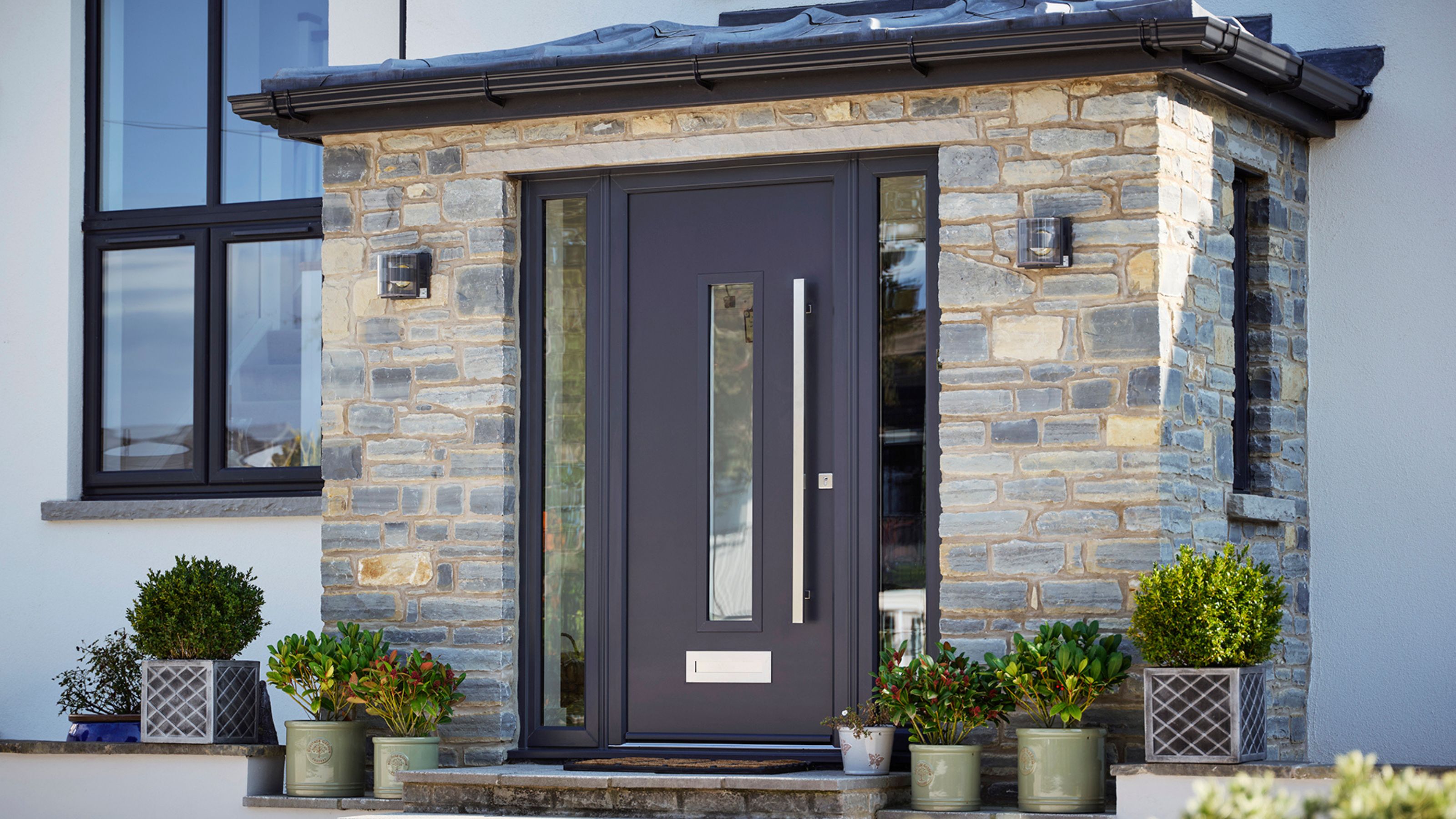

Your front door serves an important purpose, both aesthetically and functionally. Getting a door that looks right is crucial – it’s one of the first things people see as they enter your home.
But front door ideas need to be about more than looks. Your doorway also needs to provide a secure, thermally efficient entrance that keeps thieves out and precious warmth in.
If you’re choosing a replacement front door for your home, there’s a host of materials, styles and sizes to choose from. Here, we take a closer look at the benefits and key considerations involved when installing a composite door.
What is a composite door?
“As its name suggests, a composite door has a structure which utilises a number of different materials to maximise their different strengths and benefits,” says Steve Sandell, a technical manager at Endurance Doors.
Even within the composite door family, there’s various options for what the rigid outer skin of the door is made from, in addition to its core. Each of these comes with its own set of pros and cons, so it’s important to do your research before deciding on which model to install so you can get the best match for your house.

With over 20 years of engineering experience, Steve heads up product development at the UK-based manufacturer of composite doors, ensuring the Endurance range continually employs the latest technological advances, answers changing legislative requirements, and meets evolving homeowner demands and market trends.
What is a composite door made from?
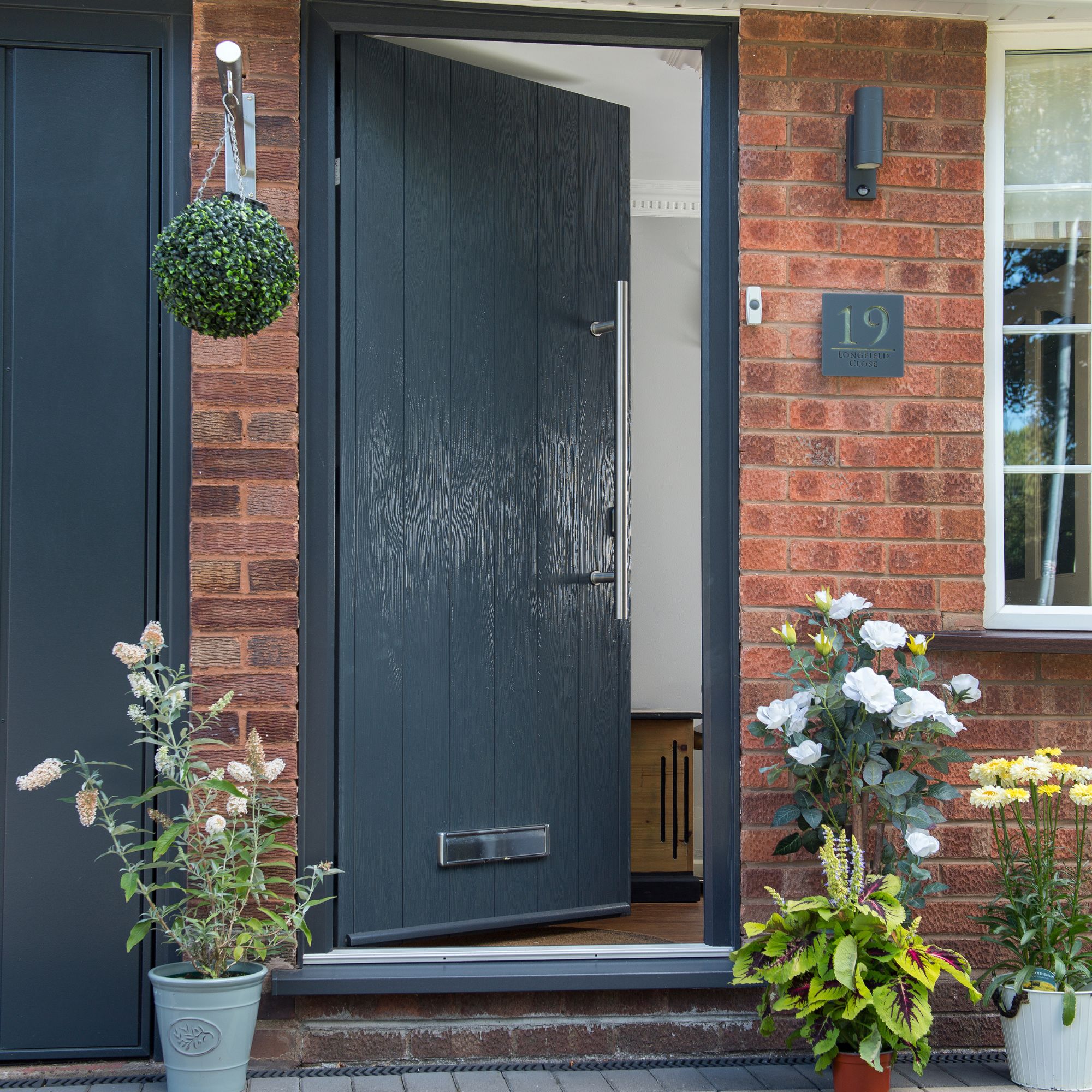
Composite doors can be engineered from a selection of materials. The heart of the door panel is the core, which is typically made from GRP (glass reinforced plastic), timber or polyurethane foam. The core is surrounded by an outer skin typically made from GRP or uPVC, resulting in a low-maintenance, weatherproof casing. 'This also enables impressive design freedom in terms of colours and finishes, such as woodgrain effects,' says Steve.
It's worth noting that not all composite doors are built the same – different manufacturers use different materials for the core and outer skin, so it’s important to check out the technical details before deciding on a door based purely on appearance. 'A Rockdoor composite door uses an aluminium inner frame and high-density polyurethane foam, resulting in a high-density core which is 60% stronger than your standard composite door,' says Lea Butler,from Rockdoor.
Get the Ideal Home Newsletter
Sign up to our newsletter for style and decor inspiration, house makeovers, project advice and more.
On the other hand, a composite door from Endurance comes with a solid timber core. 'The use of solid timber increases the door’s cost, but it delivers more rounded benefits in terms of thermal efficiency, acoustic insulation, intruder resistance and durability, meaning this greater outlay is money well spent,' says Steve.

Lea heads up Rockdoor Digital Marketing. “Having worked in the composite door industry for over 10 years I’ve learnt a lot - I love watching the industry evolve,” she says. “Composite doors are becoming the choice for most homeowners and it’s great to see.”
Is a composite front door a good idea?
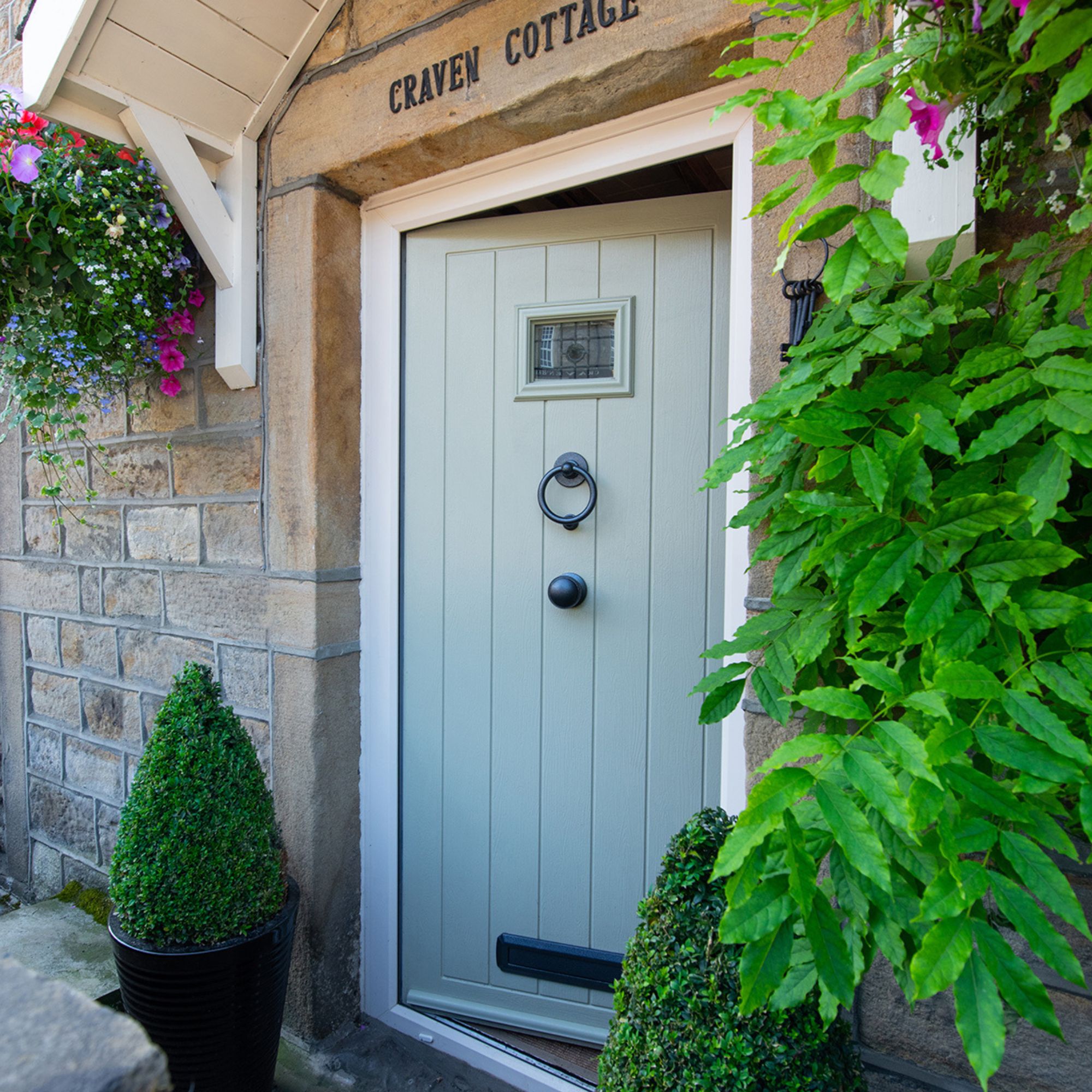
Pros of a composite front door
This type of entrance comes with numerous advantages. For starters, the multi-layered construction of a composite door means it’s extremely strong. Plus, having multiple layers provides better insulation than you’d get in a slimmer, single-layer door, so the amount of street noise coming into your home is reduced.
There’s a wealth of design options, too, whether you want to fit a contemporary, traditional or cottage-style door. Depending on your supplier, it’s possible to add various door furniture, including handles, letterboxes and glazing to create a tailored aesthetic. If you’re keen to recreate the warm appeal of wood without the required maintenance, it’s also possible to install a composite door with a grained texture that mimics the real thing.
Another advantage of composite doors is the minimal upkeep that’s required. 'Composite doors are among the easiest to look after,' says Rachel Munby from Anglian Home Improvements. 'Homeowners simply just need to wipe them down regularly and keep the seals and hinges clear of debris.'
If your goal is to stop heat escaping your home in the drive to keep energy bills down, a composite door could provide the ideal solution, as the core at the centre of the panel acts an insulator that minimizes heat transfer.
'The robust construction of composite doors makes them very secure,' says Steve. 'They are highly impact resistant and very difficult to break through, even when using tools like a sledgehammer.'
Cons of a composite front door
Of course, there are certain scenarios where a different type of door might be a better fit for your home. For instance, if you live in a historic home or in a conservation area, you might be required to install a timber door that’s authentic to the property’s original appearance. Composite doors are also more expensive than uPVC, so this will need to be factored into your budget.
Size may also mean a different material would be better. 'If you’re looking for a door to fit a particularly large or small aperture, then aluminium may be the best material choice,' says Steve. 'Aluminium door leaves can typically go much wider than either uPVC or composite.'
How much does a composite door cost?
When purchasing products to update your home, you get what you pay for – and composite doors are no exception. 'An entry-level composite door may cost as little as £1,200, but you’ll get what you pay for in terms of quality, performance and craftsmanship,' says Steve. 'A top of the range composite door may cost as much as £4,000, but you’ll get much more for your money.'
When investigating the options from different suppliers, it’s always worth checking exactly what is included with your door. It may be that the door frame and furniture need to be purchased on top of the panel itself.
Where to buy a composite door
These retailers offer a range of composite doors in various styles, colours and materials:
Is a composite door better than uPVC?
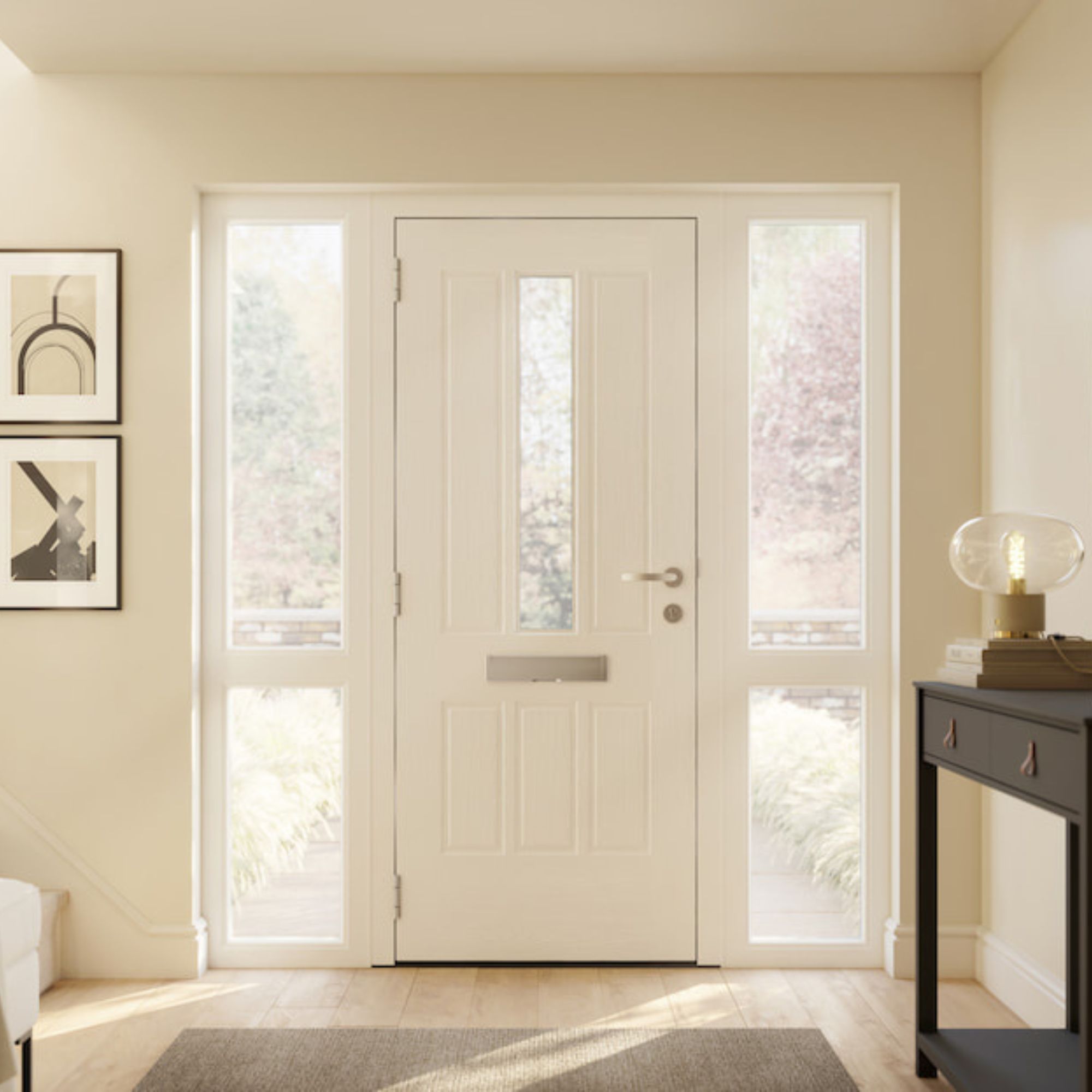
'uPVC doors are always a popular choice, as the style options come with a wide range of colour options to suit taste,' says Rachel from Anglian Home Improvements. 'They’re secure and require little onward maintenance as the construction material will not fade or rot due to weather conditions.'
A door made from uPVC is typically cheaper than a composite door, too – ideal if you have a tight budget. However, while a uPVC door offers some of the same low-maintenance properties as a composite solution, ultimately the robust, multi-layer construction of the latter makes it stronger and more durable – which is why it costs more.

Rachael Munby leverages her extensive expertise in composite doors and windows. As part of her role, Anglian remains a leader in home improvements, renowned for rigorous quality standards, innovative products, and a strong commitment to British manufacturing.
FAQs
How are composite doors installed?
All the suppliers we spoke to agreed that your composite door should be fitted by an accredited professional. 'Professional installation is essential, especially for fire doors, which require certified installers,' says Chris Moorhouse, category director of Timber, Building, Décor and Gardens at Wickes. 'All doors come with manufacturer installation instructions. When hiring a professional, look for certifications like FENSA, TrustMark or Which? Trusted Trader.'
FENSA is a government-authorised scheme that regulates companies fitting windows and doors to ensure they comply with current Building Regulations. All FENSA approved professionals are regularly assessed to ensure they continue to meet the required installation standards.
Another professional accreditation to look out for when looking for an installer is Certass membership. This government-approved body is responsible for regulating the double-glazing industry, ensuring all installations meet the required standards laid out by Building Regs.
'Composite doors weigh more than you would think and can be extremely difficult to fit if you’re not experienced,' says Lea from Rockdoor. 'Poor installation often results in issues later down the line, such as stiff doors, and doors dropping leading to the door not opening and closing correctly, causing damage.'
When starting your search for a skilled and experienced installer, your retailer’s website is usually the best place to begin. Most suppliers work with a selection of trusted installation companies you can choose from based on your postcode.

Chris is the Category Director of Building, Timber, Garden, Decor & Specialist at Wickes. He oversees commercial Category Management, Sourcing, Range & propositional development and Trading for key categories. With over 25 years of experience in the industry, Chris brings a wealth of knowledge in retail, supply chain management and product development.
Do composite doors need painting?
Due to the weather-resistant nature of your composite door’s outer skin, it should never need repainting. It’s always worth checking with your supplier whether any additional protective coatings have been applied to the door panel, as some finishes will help your door stand the test of time better than others.
'Composite doors can last over 30 years with proper care – they’re able to withstand everyday knocks and bumps and should not crack or peel over time,' says Rachel. 'From a maintenance perspective, composite doors are among the easiest front and back door types to look after – they just need to be wiped down regularly and the seals and hinges kept clear of debris.'
If you are upgrading your front door to a composite model, you might also be considering replacement windows at the same time. Our guide can help.

Rebecca Foster started her journalism career in Bangkok in 2013, where she worked on the in-house editorial team at a luxury homes magazine. Since then, Rebecca has contributed to numerous property and interiors titles in the UK and Southeast Asia. She re-located to London in 2015 to work at one of the country’s leading self-build and home renovation magazines. In 2017, she left her job to split her time between freelance journalism and teaching yoga.
You must confirm your public display name before commenting
Please logout and then login again, you will then be prompted to enter your display name.
-
 My go-to Ninja coffee machine is on sale for Easter weekend
My go-to Ninja coffee machine is on sale for Easter weekendIt makes coffee shop quality achievable at home
By Molly Cleary
-
 When to plant out annual flowering plants for vibrant, colourful garden borders – and give them the best start, according to experts
When to plant out annual flowering plants for vibrant, colourful garden borders – and give them the best start, according to expertsNot sure when to plant out annual flowering plants? We've got you covered...
By Kayleigh Dray
-
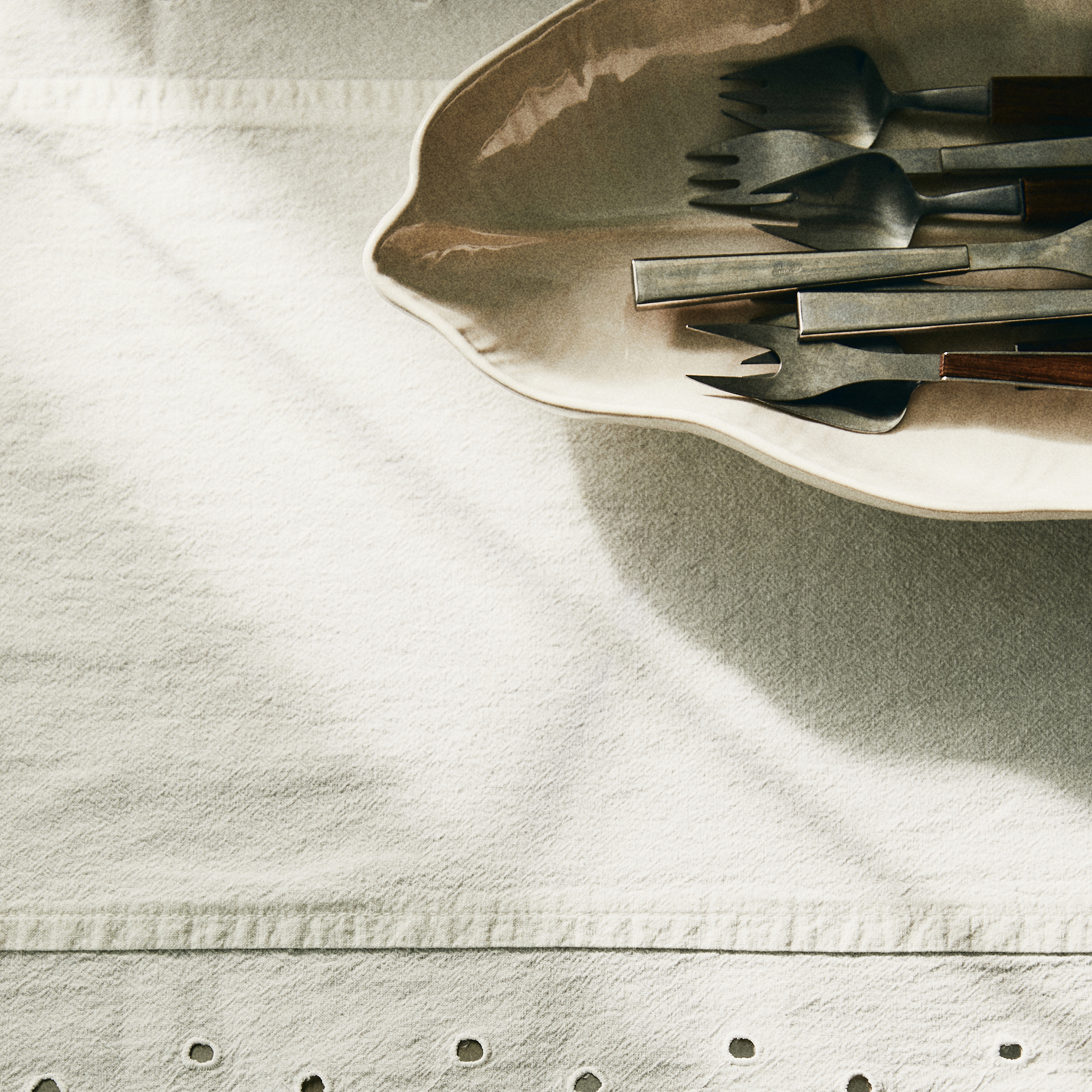 I'm a kitchen decor editor and didn't like this tableware trend - until I saw H&M Home's designer-look plates
I'm a kitchen decor editor and didn't like this tableware trend - until I saw H&M Home's designer-look platesThey made it easy to justify a new crockery set
By Holly Cockburn